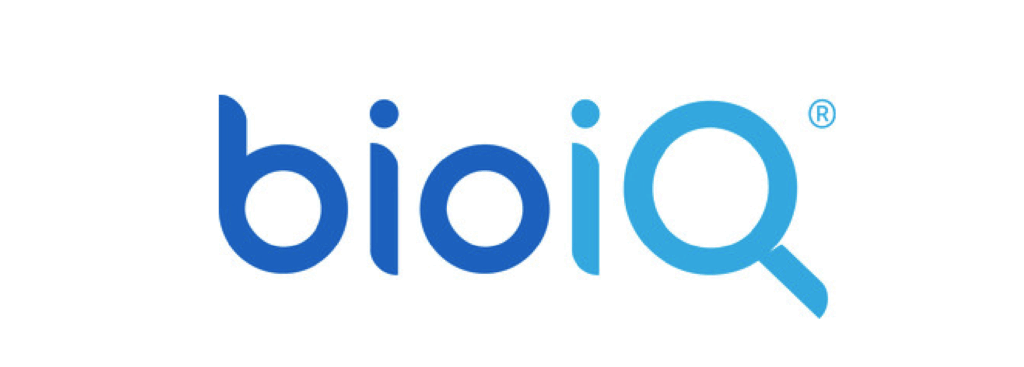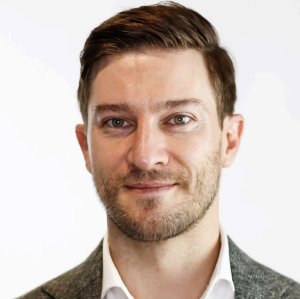

Using Organizational Physics, we sold the business with an annual run rate of several hundred million, which was an increase of 1000% from just two years earlier.
Since 2005, BioIQ has launched thousands of successful health testing programs serving millions of participants. An Ernst & Young Entrepreneur of the Year, Southeast Region USA, and the company’s Founder & Former CEO, Justin Bellante shares what it takes to scale a business, its ups and downs, and the value of mastering Organizational Physics principles, with great insight.
“A first edition of Organizational Physics: The Science of Growing a Business was given to me as a gift about a decade ago. At that time, my company had about 25 employees and a few million in sales. Reading Organizational Physics was the first time that I had seen a holistic system based on timetested principles for running and scaling a business. It contained all the fundamentals and captured all the new trends, but within a singular framework that could be readily applied to every situation. As a first-time entrepreneur, I felt that the book spoke directly to me, so I went all in. To guide us through the implementation process, I hired Lex as my coach.
As I’m writing this now, about a decade later and between the first and second editions of this book, we achieved a lot as a company and I grew a lot as a leader. In the last 5 years alone, we increased our sales over 10X to hundreds of millions of dollars. We helped major industries in the United States survive and thrive during the COVID-19 pandemic. We positively impacted the health of tens of
millions of people who lacked convenient of sufficient access to healthcare. And finally, we successfully sold the business for an impressive multiple. It was a great result on many levels. But there is more to the story and we learned some important lessons that can be applied by every entrepreneur who is committed to scaling their business.
As a young company we were faced with a steep learning curve, especially because we were operating in the complex and evolving U.S. healthcare market. Frank Robinson of SynchDev—who coined the term minimal viable product (MVP)—helped me refine the early start-up business model. In spite of establishing early product-market fit, scaling up was more difficult than we expected given that we were based in Santa Barbara (a beautiful city, but with a limited talent pool), the market was moving into and through a recession, and the health care system in the United States was undergoing a radical transformation. In order to get things done as fast as we wanted, we had to find the right resources to help.
It was at this point that Organizational Physics entered my life and the company’s life. Lex’s concepts provided us with a better understanding of how business, products, and markets operate. We had some work to do to better synchronize those lifecycles, a critical early takeaway from the book. On the business side, Lex taught me the fundamentals of structure and hiring. His expanded leadership team model (what we learned to call a “team of teams”) helped us better align and organize. By implementing High Output Management (the original OKRs) by Andy Grove within the Org Physics framework, we were able to align resources and execute more effectively.
In a short period of time, we put a lot of effort into becoming a more professionally run company without losing our entrepreneurial edge. Despite these internal improvements, top-line growth didn’t initially improve. Our growth rate, which had been hovering around 50% per year, actually slowed down to around 20%. I look back on this period as wandering through the desert. The business seemed to be doing the right things internally, but the market was slow to adopt our solutions (i.e. lifecycles were still aligning). There was a lot of internal entropy with our institutional investors, some of whom requested my removal as CEO because our growth rate was slower than targeted. Additionally, we had difficulty finding key hires who had deep healthcare domain knowledge as well as the cultural fit and leadership experience to take us to the next level.
As we continued to learn and adapt, things slowly improved. In 2018, our leadership team was being refined, and the principles of Organizational Physics were settling in as we optimized strategy, structure, process, and culture. We made the difficult strategic decision to exit a sector of our business (and walk away from some much-needed revenue), further focusing our efforts going into 2019. We felt pressure from everywhere to change things. Despite that pressure, I felt that we were still doing the right things as a company for the long term, and we were waiting for the market to catch up to us.
By 2019, everything came together. Execution was strong, we had a large pipeline of new customers, and we positioned ourselves to achieve 100% growth in our core business for the following year. In 2020, things began to get really interesting. COVID-19 hit, and thanks to the study and mastery of Organizational Physics over the preceding years, we were able to immediately launch an entirely new business unit, market, and product line for COVID testing and business continuity.
We weren’t the only company pursuing COVID testing and employer solutions. However, it felt like we had an unfair advantage. We applied all of the concepts of Organizational Physics that we had mastered over the years to an entirely new challenge in a focused, aggressive manner. As a result, we were more adaptive and successful than our competitors. This was the period in which we were able to finally apply all the lessons and the hindsight thoughts of “we wish we had done this better,” or the “next time we will do it like this.” We had arrived at a tight system of decision making, alignment, and execution.
From 2019 to 2021, we lived Organizational Physics squared. We were driving a fast, effective, growth engine and generating a lot of energy external to our business. We made final tweaks to the leadership team to make sure we were in lock-step alignment and the culture was mission-motivated and low-entropy—no politics, no drama, just a mission-first mentality. We had a rapid market validation process and a tight operating cadence. While we operated as a fully remote company starting in 2020, we were aligned, committed, and virtually unstoppable. As Lex says, we had consolidated the organization’s mass.
The pace was exhilarating. The company grew revenue 500% over this period and was highly profitable. Rather than making new net hires, we achieved all of this without adding to headcount and by scaling through processes, systems, and better execution. At the same time, we were running an 18-month process to sell the company. In 2022, we exited with an annual revenue run rate of $300M+, which was an increase of 1000% over 2019. There is no substitute for timing and preparation. The principles of Organizational Physics guided us to and through a very challenging, rewarding, and successful journey.”
This case study was originally published in the book Organizational Physics: The Science of Growing a Business by Lex Sisney (2022, First Revised Edition) © Organizational Physics Inc. All rights reserved.
Let’s build your high-performance organization together.
Organizational Physics® empowers CEOs and leadership teams to scale with clarity and confidence. By applying universal principles and proven frameworks, we help organizations improve internal performance, accelerate growth, and build resilient structures for the long term.
© Copyright Organizational Physics Inc.